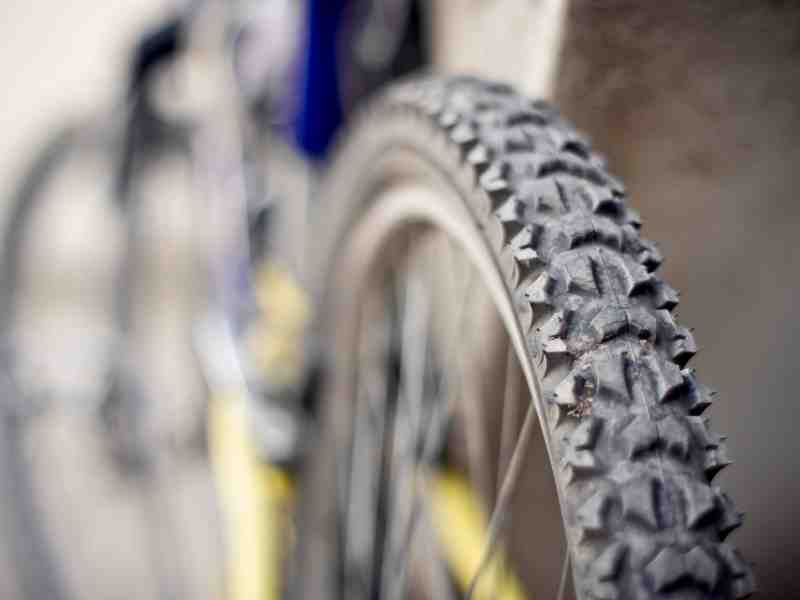
Cyclists need to be aware of warning signs when replacing gravel bike tires to ensure a safe and enjoyable ride. Worn tires can significantly affect your bike’s performance and handling characteristics on off-road trails, so it is essential to watch for signs that the time has come for a new set.
Factors such as the frequency of riding and the terrain you ride on can lead to tires wearing out faster, so it is important to check your tires for wear regularly. By understanding when it’s time for a new set of gravel bike tires and acting accordingly, you can stay safe and enjoy the ride!
A tire’s lifespan depends on various factors, such as the type of vehicle it is used on, how often it is used, and the conditions in which it is driven. It is important to recognize signs that a tire may need replacing to remain safe and avoid potential flatness. If your tires are brand new, they may last up to 10 years, but this is not always guaranteed.
Look for signs of wear
When it comes to gravel biking, it’s important to look for signs of wear and tear on your tires. A new tire should have a rounded shape, but over time the center of the tire will flatten out due to the increased friction as you ride it more. This eventually results in a flat spot that widens from edge to edge.
Additionally, some brands include indicators such as tiny holes that will disappear when the tire has worn enough, signaling that it’s time for a replacement. Lastly, inspect your tires regularly for cuts and other signs of damage to stay safe on your rides.
Remember, checking for signs of wear and tear on your tires will ensure you get the most out of your gravel biking experience. With just a few simple steps, you can keep your tires in optimal condition and enjoy every ride!
Inspect your tires for damage
Inspecting your tires for damage is an important part of regular maintenance for gravel bike riders. Not only could this help you to avoid serious issues down the road, but a proper inspection can ensure your tires are up to the challenge of off-road riding.
When inspecting the tire, look for any holes, cuts, or tears in the rubber casing. If you start getting frequent flats, it may be time to replace the tire, which could indicate that the inner layer has been exposed. Additionally, off-road tires can wear down over time and lose their grip, look for any changes in the tread pattern or broken knobs, which are signs of a worn-down tire. By regularly inspecting your tires, you can ensure that you have the best possible performance for your gravel bike.
Tubeless and tubular
Gravel bikes are becoming increasingly popular, and riders often look to the best tire options to give them the most efficient and comfortable ride. Tubeless and tubular tires are
Tubeless and tubular tires offer advantages and disadvantages when used on gravel bikes. Tubeless tires are typically lighter than traditional clincher tires, resulting in improved acceleration and climbing performance.
Additionally, the latex-based sealant used instead of an inner tube creates a firmer bond between the tire and rim, giving the rider more control over the bike. However, tubeless tires require regular maintenance and inspection to ensure that the sealant remains effective.
Tubular tires are also gaining popularity for gravel bikes as they offer improved traction on loose surfaces and reduce rolling resistance, keeping pedaling effort to a minimum. Additionally, because they are glued onto the rim, there is less risk of punctures or cuts than with tubeless tires.
The disadvantage of tubular tires is that the glue can become loose in wet conditions, and regular inspection and maintenance are required to prevent this from happening. Additionally, if a puncture does occur, the entire tire must be removed and replaced, as it cannot be patched.
Overall, tubeless and tubular tires both offer advantages for gravel bikes. Depending on the terrain and conditions in which a rider will be cycling, either option could be the best choice for their particular needs. It is important to weigh the pros and cons of each tire type before deciding which one is right for them.
Maintaining your tires is an important step in ensuring the longevity of your ride. Following these guidelines will help keep you safe and guarantee that your bike performs at its best. Taking care of your tires also gives you peace of mind that your ride will last much longer.
Be sure to inspect, clean, and maintain your tires regularly. Doing so will ensure that your bike is up to the task of any terrain, and you’ll have a worry-free experience every time you ride!




